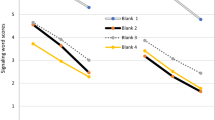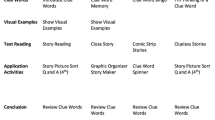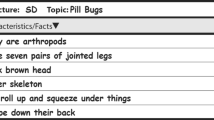Abstract
Students who struggle with reading have particular trouble with expository text. Instruction in text structures has been shown to be effective for improving expository reading comprehension. However, few studies have been conducted specifically with upper elementary aged struggling readers. To address these issues, we developed a new intervention, Structures, to improve the expository text comprehension of 4th and 5th grade struggling readers. In this study, we conducted a randomized control trial to assess the promise, usability, and feasibility of one component of the intervention designed to teach students to identify and discriminate the five text structures. Forty-five 4th and 5th grade struggling readers were randomly assigned to intervention or business-as-usual conditions. Students in the Structures condition were taught to identify and discriminate among the five text structures used by authors of expository text: description, sequence, cause/effect, compare/contrast, and problem/solution. At post-test, experimental students (n = 24) statistically significantly outperformed control students (n = 21) on a structures identification measure (d = 0.94). No other statistically significant differences were found. However, a practically (but not statistically) significant effect size was found on an oral retell measure (d = 0.29). Results also indicate the materials were usable for teachers and it was feasible to implement the intervention in a school setting. The implications and future directions of the development of remaining components in the Structures intervention are discussed.


Similar content being viewed by others
References
Anderson, R. C., & Nagy, W. E. (1991). Word meanings. Hillsdale, NJ: Lawrence Erlbaum.
Armbruster, B. B. (1988). Why some children have trouble reading content area textbooks (Technical report no. 432). University of Illinois at Urbana-Champaign, Center for the Study of Reading.
Bakken, J. P., Mastropieri, M. A., & Scruggs, T. E. (1997). Reading comprehension of expository science material and students with learning disabilities: A comparison of strategies. Journal of Special Education, 31, 300–324. https://doi.org/10.1177/002246699703100302.
Beck, I. L., McKeown, M. G., & Worthy, J. (1995). Giving a text voice can improve students’ understanding. Reading Research Quarterly, 30, 220–238. https://doi.org/10.2307/748033.
Best, R. M., Floyd, R. G., & Mcnamara, D. S. (2008). Differential competencies contributing to children’s comprehension of narrative and expository texts. Reading Psychology, 29(2), 137–164. https://doi.org/10.1080/02702710801963951.
Broer, N. A., Aarnoutse, C. A. J., & Kieviet, F. K. (2002). The effects of instructing the structural aspects of text. Educational Studies, 28, 213–238. https://doi.org/10.1080/0305569022000003681.
Cohen, J. (1988). Statistical power analysis for the behavioral sciences (2nd ed.). Hillsdale, NJ: Lawrence Earlbaum.
Duke, N. K. (2000). 3.6 Minutes per day: The scarcity of informational texts in first grade. Reading Research Quarterly, 35, 202–224. http://0-www.jstor.org.library.unl.edu/stable/748074.
Duke, N. K., Pearson, P. D., Strachan, S. L., & Billman, A. K. (2011). Essential elements of fostering and teaching reading comprehension. In S. J. Samuels & A. E. Farstrup (Eds.), What research has to say about reading instruction (4th ed., pp. 51–93). Newark, DE: International Reading Association.
Englert, C. S., & Hiebert, E. H. (1984). Children’s developing awareness of text structures in expository materials. Journal of Educational Psychology, 76, 65–75. https://doi.org/10.1037/0022-0663.76.1.65.
Englert, C. S., Raphael, T. E., Anderson, L. M., Anthony, H. E., & Stevens, D. D. (1991). Making strategies and self-talk visible: Writing instruction in regular and special education classrooms. American Educational Research Journal, 28, 337–372. https://doi.org/10.3102/00028312028002337.
Englert, C. S., & Thomas, C. C. (1987). Sensitivity to text structure in reading and writing: A comparison between learning disabled and non-learning disabled students. Learning Disability Quarterly, 10(2), 93–105.
Hall, K. M., Sabey, B. L., & McClellan, M. (2005). Expository text comprehension: Helping primary grade teachers use expository texts to their full advantage. Reading Psychology, 26, 211–234. https://doi.org/10.1080/02702710590962550.
Hammann, L. A., & Stevens, R. J. (2003). Instructional approaches to improving students’ writing of compare-contrast essays: An experimental study. Journal of Literacy Research, 35, 731–756. https://doi.org/10.1207/s15548430jlr3502_3.
Hebert, M., Bohaty, J. J., Nelson, J. R., & Brown, J. A. (2016). The effects of text structure instruction on expository reading comprehension: A meta-analysis. Journal of Educational Psychology, 108, 609–629. https://doi.org/10.1037/edu0000082.
León, J. A., & Carretero, M. (1995). Intervention in comprehension and memory strategies: Knowledge and use of text structure. Learning and instruction, 5(3), 203–220. https://doi.org/10.1016/0959-4752(95)00011-Q.
Loxterman, J. A., Beck, I. L., & McKeown, M. G. (1994). The effects of thinking aloud during reading on students’ comprehension of more or less coherent text. Reading Research Quarterly, 29, 353–367. https://doi.org/10.2307/747784.
McGee, L. M. (1982). Awareness of text structure: Effects on children’s recall of expository text. Reading Research Quarterly, 17, 581–590. https://doi.org/10.2307/747572.
McLaughlin, E. M. (1990). Effects of graphic organizers and levels of text difficulty on less-proficient fifth-grade readers’ comprehension of expository text (Doctoral dissertation). Retrieved from ProQuest Digital Dissertations (UMI No. 9030955).
MetaMetrics. (2009). Lexile-to-grade correspondence. Retrieved from https://lexile.com/about-lexile/grade-equivalent/grade-equivalent-chart/.
Meyer, B. J. F. (1975). The organization of prose and its effects on memory. Amsterdam: North-Holland Publishing.
Meyer, B. J. F. (1985). Prose analysis: Purposes, procedures, and problems. In B. K. Britton & J. Black (Eds.), Understanding expository text: A theoretical and practical handbook for analyzing explanatory text (pp. 269–304). Hillsdale, NJ: Erlbaum.
Meyer, B. J. F. (1987). Following the author’s top-level organization: An important skill for reading comprehension. In R. J. Tierney, P. L. Anders, & J. Nichols Mitchell (Eds.), Understanding readers’ understanding: Theory and practice (pp. 59–76). Hillsdale, NJ: Erlbaum.
Meyer, B. J. F., Brandt, D. M., & Bluth, G. J. (1980). Use of top-level structure in text: Key for reading comprehension of ninth-grade students. Reading Research Quarterly, 16, 72–103. https://doi.org/10.2307/747349.
Meyer, B. J. F., Middlemiss, W., Theodorou, E., Brezinski, K. L., McDougall, J., & Bartlett, B. J. (2002). Effects of structure strategy instruction delivered to fifth-grade children using the internet with and without the aid of older adult tutors. Journal of Educational Psychology, 94, 486–519. https://doi.org/10.1037//0022-0663.94.3.486.
Meyer, B. J. F., Wijekumar, K. K., & Lin, Y. (2011). Individualizing a web-based structure strategy intervention for fifth graders’ comprehension of nonfiction. Journal of Educational Psychology, 103, 140–168.
Meyer, B. J. F., Wijekumar, K., Middlemiss, W., Higley, K., Lei, P., Meier, C., et al. (2010). Web-based tutoring of the structure strategy with or without elaborated feedback or choice for fifth- and seventh-grade readers. Reading Research Quarterly, 45, 62–92.
Meyer, B. J. F., Young, C. J., & Bartlett, B. J. (1989). Memory improved: Enhanced reading comprehension and memory across the life span through strategic text structure. Hillsdale, NJ: Lawrence Erlbaum.
Ocasio, T. L. (2006). A comparison of two instructional programs to develop strategies to improve reading comprehension (Doctoral dissertation). Retrieved from ProQuest Digital Dissertations (UMI No. 3209082).
Raphael, T. E., & Kirschner, B. M. (1985). The effects of instruction in compare/contrast text structure on sixth-grade students’ reading comprehension and writing products (Research series No. 161). East Lansing: Institute for Research on Teaching, College of Education, Michigan State University.
Ray, M. N., & Meyer, B. J. (2011). Individual differences in children’s knowledge of expository text structures: A review of literature. International Electronic Journal of Elementary Education, 4(1), 67–82.
Richgels, D., McGee, L. M., Lomax, R. G., & Sheard, C. (1987). Awareness of four text structures: Effects on recall of expository text. Reading Research Quarterly, 22(2), 177–196.
Roehling, J., Hebert, M., Nelson, J. R., & Bohaty, J. (2017). Text structure strategies for improving expository reading comprehension. The Reading Teacher, 71, 71–82. https://doi.org/10.1002/trtr.1590.
Russell, S. L. (2005). Challenging task in appropriate text: Designing discourse communities to increase the literacy growth of adolescent struggling readers (Doctoral dissertation). Retrieved from ProQuest Digital Dissertations (UMI No. 3178568).
Sáenz, L. M., & Fuchs, L. S. (2002). Examining the reading difficulty of secondary students with learning disabilities: Expository versus narrative text. Remedial and Special Education, 23, 31–41. https://doi.org/10.1177/074193250202300105.
Simmons, D. C., Coyne, M. D., Kwok, O. M., McDonagh, S., Harn, B. A., & Kame’enui, E. J. (2008). Indexing response to intervention a longitudinal study of reading risk from kindergarten through third grade. Journal of Learning Disabilities, 41, 158–173. https://doi.org/10.1177/0022219407313587.
Smith, P. L., & Friend, M. (1986). Training learning disabled adolescents in a strategy for using text structure to aid recall of instructional prose. Learning Disabilities Research, 2, 38–44.
Snow, C. (2002). Reading for understanding: Toward an R&D program in reading comprehension. Santa Monica, CA: Rand Corporation.
Snow, C. E., Burns, M. S., & Griffin, P. (Eds.). (1998). Preventing reading difficulties in young children. Washington, DC: National Academy Press.
Spires, H., Gallini, J., & Riggsbee, J. (1992). Effects of schema-based and text structure-based cues on expository prose comprehension in 4th graders. Journal of Experimental Education, 60, 307–320. http://0-www.jstor.org.library.unl.edu/stable/20152339.
Taylor, B. M. (1980). Children’s memory for expository text after reading. Reading Research Quarterly, 15, 399–411. https://doi.org/10.2307/747422.
Taylor, M. B., & Williams, J. P. (1983). Comprehension of learning-disabled readers: Task and text variations. Journal of Educational Psychology, 75, 743–751.
Torgesen, J., Stancavage, F., Myers, D., Schirm, A., Stuart, E., Vartivarian, S., … Haan, C. (2006). Closing the reading gap: First year findings from a randomized trial of four reading interventions for striving readers: Final report. Washington, DC: US Department of Education, Institute of Education Sciences.
Van Dijk, T. A., & Kintsch, W. (1983). Strategies of discourse comprehension. New York, NY: Academic Press.
Wagner, R. K., Torgesen, J. K., Rashotte, C. A., & Pearson, N. A. (2009). TOSREC: Test of silent reading efficiency and comprehension. Austin, TX: Pro-Ed.
Wijekumar, K. K., Meyer, B. J. F., & Lei, P. (2012). Large-scale randomized control trial with 4th graders using intelligent tutoring of the structure strategy to improve nonfiction reading comprehension. Educational Technology Research and Development, 60, 986–1013. https://doi.org/10.1007/s11423-012-9263-4.
Wijekumar, K., Meyer, B. J. F., Lei, P., Lin, Y., Johnson, L. A., Spielvogel, J. A., et al. (2014). Multisite randomized controlled trial examining intelligent tutoring of structure strategy for 5th-grade readers. Journal of Research on Educational Effectiveness, 7(4), 331–357. https://doi.org/10.1080/19345747.2013.853333.
Wilkins, S. A. (2007). Teaching expository text strategies to improve reading comprehension in low readers (Doctoral dissertation). Retrieved from ProQuest Digital Dissertations (UMI No. 3270462).
Williams, J. P., Hall, K. M., Lauer, K. D., Stafford, K. B., DeSisto, L. A., & deCani, J. S. (2005). Expository text comprehension in the primary grade classroom. Journal of Educational Psychology, 97, 538–550. https://doi.org/10.1037/0022-0663.97.4.538.
Williams, J. P., & Pao, L. S. (2011). Teaching narrative and expository text structure to improve comprehension. In H. L. Swanson, K. R., Harris, & S. Graham (Eds.), Handbook of reading interventions (pp. 254–278). New York, NY: Guilford Press.
Williams, J. P., Pollini, S., Nubla-Kung, A. M., Snyder, A. E., Garcia, A., Ordynans, J. G., et al. (2014). An intervention to improve comprehension of cause/effect through expository text structure instruction. Journal of Educational Psychology, 106(1), 1–17. https://doi.org/10.1037/a0033215.
Williams, J. P., Stafford, K. B., Lauer, K. D., Hall, K. M., & Pollini, S. (2009). Embedding reading comprehension training in content-area instruction. Journal of Educational Psychology, 101(1), 1–20. https://doi.org/10.1037/a001315.
Woodcock, R. W. (1998). Woodcock reading mastery tests-revised (WRMT-R). Circle Pines, MN: American Guidance Service.
Acknowledgements
The research reported here was supported by the Institute of Education Sciences, US Department of Education, through award R324B130005 to the University of Nebraska. We specifically thank Konstantin Blume, Kelsey Moreland, Jadee White, Julia Roehling, and Hallie Sharkey for assistance with the development of materials, data collection, and scoring. We also extend thanks to the teachers and students who participated in this project. Statements do not reflect the position or policy of the university, schools, or persons, and no official endorsement should be inferred.
Author information
Authors and Affiliations
Corresponding author
Additional information
The opinions expressed are those of the authors and do not represent the views of the Institute or the US Department of Education.
Appendices
Appendix A: Structures intervention materials
-
1.
Examples of power point presentation slides from lesson 2.
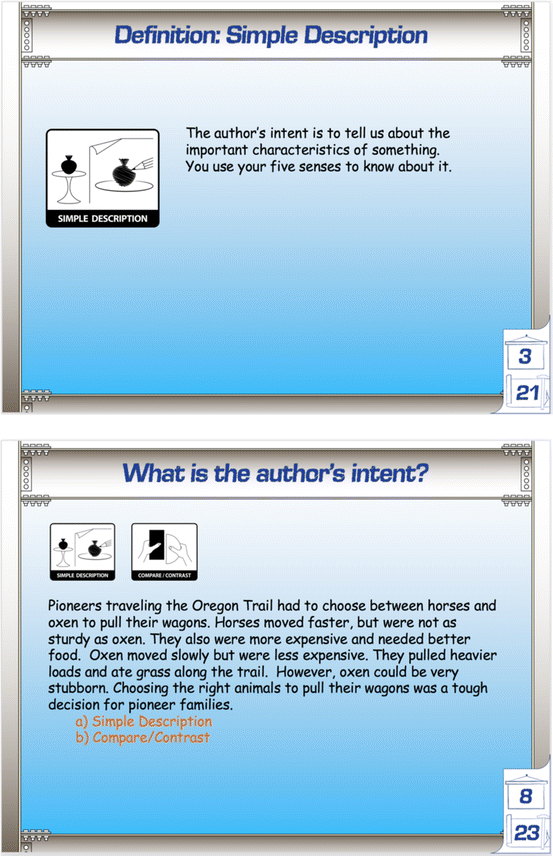
-
2.
Examples of quick start guide instructions from lesson 2.
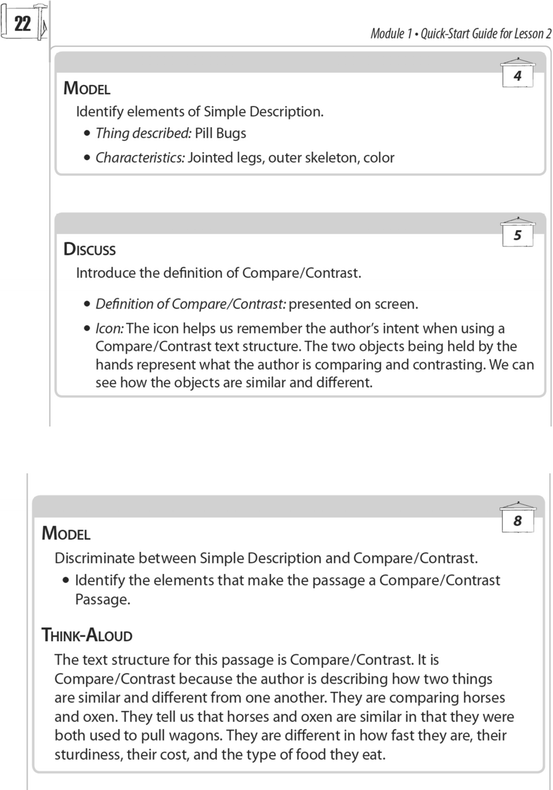
-
3.
Examples of student workbook exercises from lesson 2.
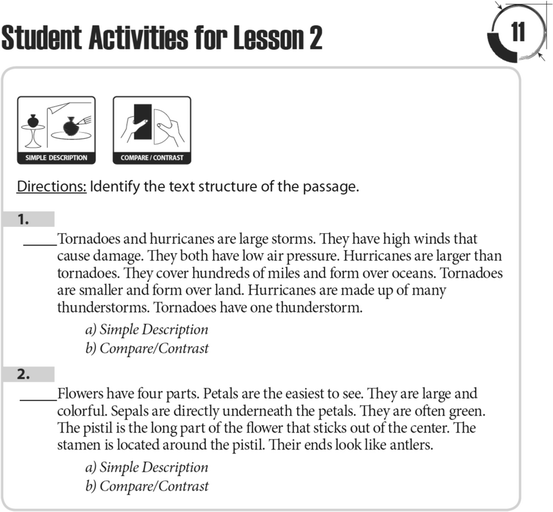
Appendix B: Teacher interview questions
For this research, we will limit our interview to questions about the program, effectiveness of the program, the program materials, ideas for improvement of the program, and ideas about who the program might benefit.
-
1.
How effective do you think the Structures program was with your students?
Follow-up: Who do you think the program might be most effective for?
-
2.
What elements of the program were most effective? Please explain.
-
3.
What elements of the program were least effective? Please explain.
-
4.
Did you feel you had enough time to cover the material in the intervention?
-
5.
Did you find the passages included relevant content and were at an appropriate reading level for your students?
-
6.
How well did you think the passages matched the structures being taught?
-
7.
Were some text structures that seemed easier to teach (and for your students to learn) than others? Please explain your thoughts about the text structures.
-
8.
Did the training and materials provide enough support for you to teach Module 1 of the Structures intervention effectively? What could have helped improve this?
-
9.
Did you find the power-point to be an effective teaching tool for this intervention? Please elaborate on your answer.
-
10.
How could the Structures intervention be improved?
Appendix C: Example fidelity checklist form

Rights and permissions
About this article
Cite this article
Hebert, M., Bohaty, J.J., Nelson, J.R. et al. Identifying and discriminating expository text structures: An experiment with 4th and 5th grade struggling readers. Read Writ 31, 2115–2145 (2018). https://doi.org/10.1007/s11145-018-9826-9
Published:
Issue Date:
DOI: https://doi.org/10.1007/s11145-018-9826-9


